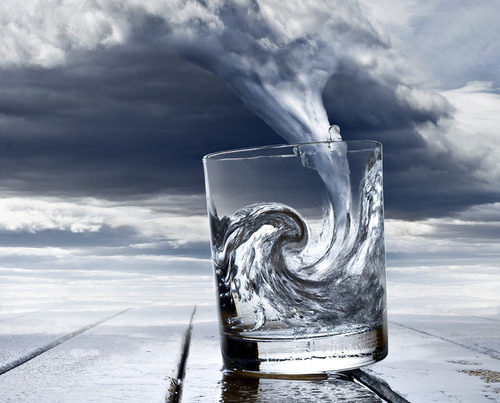Crystal growing is a fun activity for kids and it is relevant to several areas of science, such as chemistry, as well as mineral formation in geology. Schools often use commercial chemicals to grow crystals in the classroom, and these chemicals can be difficult, if not impossible, to purchase as an individual. Here are a few household chemicals that can be used to grow crystals at home:
Aluminum potassium sulfate (alum) can be purchased in the spices area of the grocery store. This alum is not pure, and crystals do sometimes turn out small. Purchasing a more expensive brand will often grow better crystals, but alum is fairly expensive.
Sodium borate (borax) can be purchased in the laundry section of many stores.
Calcium chloride can be purchased at home improvement stores and stores that sell chemicals for swimming pools. Even at a specialty store, this is a fairly inexpensive chemical to purchase.
Copper sulfate is the ingredient in products used to kill roots in sewer lines. You can find this at home improvement stores. Moderately expensive, but a container goes a long way. This chemical makes very large, beautiful blue crystals and is a favorite for crystal growing. But, do be careful with storage of the crystals as the chemical is poisonous and it can be mistaken for candy by young children!
Magnesium sulfate (epsom salts) can be purchased at a drug store or the pharmacy section of the grocery store. It’s fairly inexpensive.
Sodium chloride (table salt) grows very nice cubic crystals.
Sucrose (table sugar) is used to make “rock candy” crystals. There are quite a few recipes on the internet for making rock candy, and it is a favorite to make. However, these are the hardest crystals to grow, and it can be messy! I’ve tried this using several different methods and have never been very successful. If anyone has a good recipe and growing technique for making rock candy, please post! 🙂
How to grow crystals:
The trick is to make a supersaturated solution of the chemical. It’s best to start with distilled water, which can be purchased by the gallon at the grocery. Heat the water, slowly add the chemical, and stir until completely dissolved. In order to make a supersaturated solution, the water needs to be very hot and you have to dissolve as much of the chemical as possible. Continue to add the chemical a little at a time, dissolving thoroughly before adding more. When you finally reach the point where no more chemical will dissolve, pour the hot solution into the container you’ll use to grow the crystals. You can also add a little food coloring if you want to make colored crystals. Don’t add too much as you don’t want to dilute the solution.
It’s important to use a container with very smooth inside surfaces, like glass. Also, be sure to only pour in the solution that is completely dissolved. Let the undissolved chemicals settle to the bottom of the original container and don’t transfer the last bit of solution. Finally, suspend a string into the crystal growing solution to give your crystals something to grow around, and leave undisturbed. Depending on the chemical used, crystals usually begin to form within hours, but may take several days to grow larger.
Safety:
Take care with the finished crystals and store them appropriately. Copper sulfate crystals are especially poisonous if ingested. Whatever chemical you use, do read the product label for safety precautions. The same precautions should be taken with the finished crystals! Remember, many candies are made to look like crystals and small children may not be able to tell the difference.




